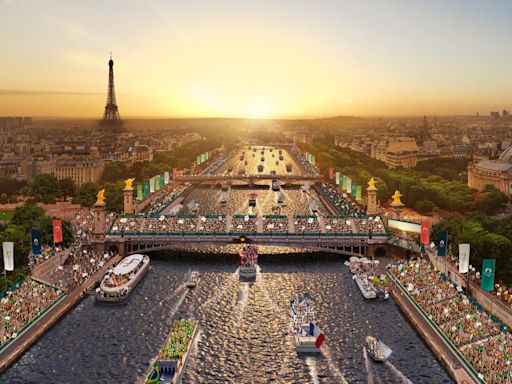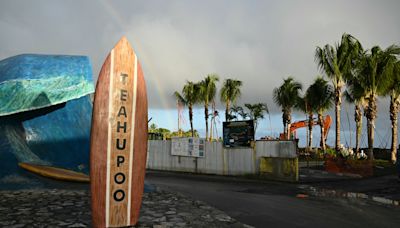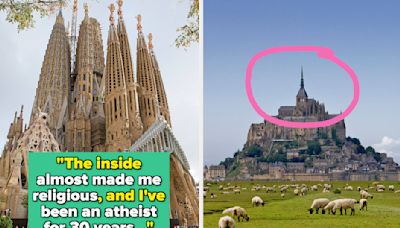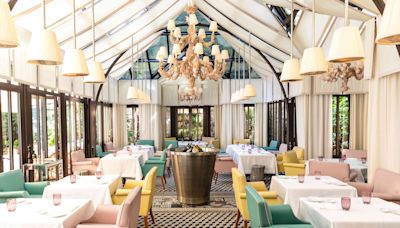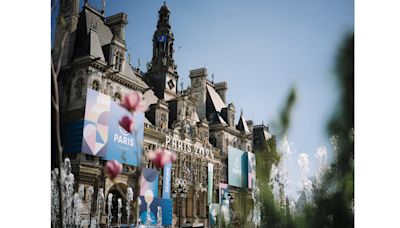Search results
People also ask
Who built the Eiffel Tower?
Why is it called the Eiffel Tower?
Where is the Eiffel Tower located?
How did Eiffel Tower influence architecture?
5 days ago · Eiffel Tower, wrought-iron structure in Paris that is one of the most famous landmarks in the world. It is also a technological masterpiece in building-construction history. It was designed and built (1887–89) by Gustave Eiffel and named in his honor.
- Chrysler Building
Chrysler Building, office building in New York City,...
- St. Peter's Basilica
St. Peter’s Basilica, present basilica of St. Peter in...
- Chrysler Building
The Eiffel Tower (/ ˈ aɪ f əl / EYE-fəl; French: Tour Eiffel [tuʁ ɛfɛl] ⓘ) is a wrought-iron lattice tower on the Champ de Mars in Paris, France. It is named after the engineer Gustave Eiffel, whose company designed and built the tower from 1887 to 1889.
- 28 January 1887; 136 years ago
- City of Paris, France
- 3
Emile Nouguier and Maurice Koechlin, the two chief engineers in Eiffel's company, had the idea for a very tall tower in June 1884. It was to be designed like a large pylon with four columns of lattice work girders, separated at the base and coming together at the top, and joined to each other by more metal girders at regular intervals.
The Eiffel Tower was built from 1887 to 1889 by French engineer Gustave Eiffel, whose company specialized in building metal frameworks and structures. Gustave Eiffel is at the origin of many metallic works in Europe including the Porto Viaduct (Portugal), the Viaduct du Garabit (France) and the Budapest train station (Hungary).
- Designing and Building the Eiffel Tower
- The Eiffel Tower Becomes a Permanent Feature of the Paris Skyline
In 1889, Paris hosted an Exposition Universelle (World’s Fair) to mark the 100-year anniversary of the French Revolution. More than 100 artists submitted competing plans for a monument to be built on the Champ-de-Mars, located in central Paris, and serve as the exposition’s entrance. The commission was granted to Eiffel et Compagnie, a consulting and construction firm owned by the acclaimed bridge builder, architect and metals expert Alexandre-Gustave Eiffel. While Eiffel himself often receives full credit for the monument that bears his name, it was one of his employees—a structural engineer named Maurice Koechlin—who came up with and fine-tuned the concept. Several years earlier, the pair had collaborated on the Statue of Liberty’s metal armature.
Did you know? The base pillars of the Eiffel Tower are oriented with the four points of the compass.
Eiffel reportedly rejected Koechlin’s original plan for the tower, instructing him to add more ornate flourishes. The final design called for more than 18,000 pieces of puddle iron, a type of wrought iron used in construction, and 2.5 million rivets. Several hundred workers spent two years assembling the framework of the iconic lattice tower, which at its inauguration in March 1889 stood nearly 1,000 feet high and was the tallest structure in the world—a distinction it held until the completion of New York City’s Chrysler Building in 1930. (In 1957, an antenna was added that increased the structure’s height by 65 feet, making it taller than the Chrysler Building but not the Empire State Building, which had surpassed its neighbor in 1931.) Initially, only the Eiffel Tower’s second-floor platform was open to the public; later, all three levels, two of which now feature restaurants, would be reachable by stairway or one of eight elevators.
Millions of visitors during and after the World’s Fair marveled at Paris’ newly erected architectural wonder. Not all of the city’s inhabitants were as enthusiastic, however: Many Parisians either feared it was structurally unsound or considered it an eyesore. The novelist Guy de Maupassant, for example, allegedly hated the tower so much that he often ate lunch in the restaurant at its base, the only vantage point from which he could completely avoid glimpsing its looming silhouette.
Originally intended as a temporary exhibit, the Eiffel Tower was almost torn down and scrapped in 1909. City officials opted to save it after recognizing its value as a radiotelegraph station. Several years later, during World War I, the Eiffel Tower intercepted enemy radio communications, relayed zeppelin alerts and was used to dispatch emergency troop reinforcements. It escaped destruction a second time during World War II: Hitler initially ordered the demolition of the city’s most cherished symbol, but the command was never carried out. Also during the German occupation of Paris, French resistance fighters famously cut the Eiffel Tower’s elevator cables so that the Nazis had to climb the stairs.
Over the years, the Eiffel Tower has been the site of numerous high-profile stunts, ceremonial events and even scientific experiments. In 1911, for instance, the German physicist Theodor Wulf used an electrometer to detect higher levels of radiation at its top than at its base, observing the effects of what are now called cosmic rays. The Eiffel Tower has also inspired more than 30 replicas and similar structures in various cities around the world.
Apr 26, 2019 · Discover how the 984-ft (300m) tall Tower project was really born and who, behind Gustave Eiffel, were the inventors of the Tower. By Bertrand Lemoine. One would think that the tower named after its famous builder was naturally invented by him.
Feb 20, 2024 · The Eiffel Tower, an iconic iron lattice structure in Paris, France, was designed by Alexandre Gustave Eiffel and his team for the 1889 World’s Fair. Standing at 1,062 feet (324 meters), the tower was constructed using 18,000 pieces of wrought iron and 2.5 million rivets.
